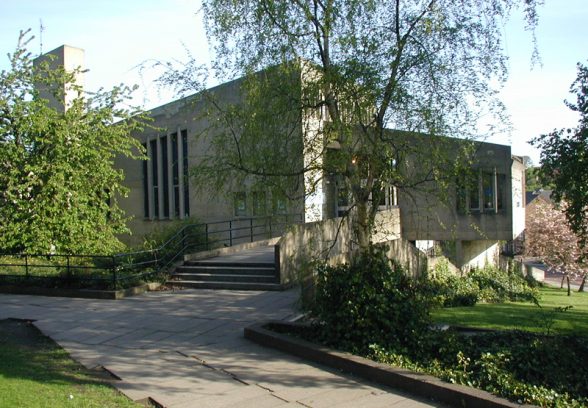This website uses cookies
This website uses cookies to enable it to function properly and to analyse how the website is used. Please click 'Close' to accept and continue using the website.



The Twentieth Century Society is continuing its fight to save Dunelm House, the Brutalist student union building in Durham, requesting that the Secretary of State reviews her decision to refuse Grade II listing.
The C20 Society says the minister is wrong to accept at face value the university consultants’ argument that the building is technically flawed as this claim has not been proven.
Clare Price, Senior Conservation Adviser with C20 Society, said: “We are of the opinion that the issues are ones of repair and that they can be addressed. State of repair is not a valid consideration when deciding whether a building can be listed – a necessary precaution to prevent deliberate neglect. Many buildings of this period, listed and unlisted, suffer from problems with concrete, often caused by lack of maintenance or inappropriate repairs. These issues have successfully been resolved in numerous cases.”
She pointed out that the original roof has never been replaced which would be expected in a building of this age with “design defects.” She also highlighted that C20 Society has great expertise on concrete repair. Its director Catherine Croft set up the only course in the conservation of Historic Concrete worldwide at West Dean, which is validated by Historic England. Croft also co-authored a book on concrete repair, published by Historic England in 2015.
Durham University has already announced that it is launching an international competition to replace Dunelm House.
The five-level concrete building was constructed between 1964 and 1966 by the river Wear to the designs of Richard Raines* of the Architects’ Co-Partnership, under supervision of the partner Michael Powers. It connects to Ove Arup’s Grade I-listed Kingsgate Bridge, which was constructed four years earlier. Arup acted as structural engineer and architectural advisor and is famously featured in a bust on one of the outside walls.
In addition to winning both a Civic Trust award and the RIBA Bronze Medal for 1966, the building was positively reviewed at the time of its completion and has subsequently been praised many times. Architectural historian Nikolaus Pevsner called the block ’Brutalist by tradition but not brutal to the landscape… the elements, though bold, [are] sensitively composed’.
The Architect’s Journal described it as “uncompromisingly modern yet markedly respectful of the splendour of the site” describing the “joy” of the Kingsgate Bridge as being “matched by the convincing and delightful huddle of Dunelm House. Also in 1966, Concrete Quarterly called it “sophisticated” and Interbuild “a completely satisfying building”. Later commentators have also enthused, Martin Roberts summing it up as “the greatest contribution modern architecture has made to the enjoyment of an English medieval city” (1995). Jack Lynn’s article in the Architect’s Journal in 1972 noted the strong Nordic influences and the inclusion of furniture designed by Alvar Aalto as completing the composition.
ACP designed a variety of buildings for other universities, several of which have been added to the National List. Indeed it is likely that their design for one of these designated buildings, the Beehives building at St John’s College, Oxford (Grade II), may have brought the firm to Durham University’s attention when seeking an architect for this project. As a firm ACP achieved recognition for the innovative design of the Brynmawr Rubber Factory (Grade II* – demolished) and many school buildings.
Alan Powers wrote about Dunelm House as January’s Building of the Month.

Become a C20 member today and help save our modern design heritage.